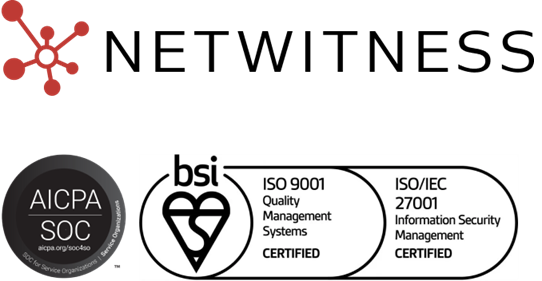The awe and wonder of modern technology are undeniable. The introduction of technologies like Cloud services and Cloud SIEM has opened up a world of possibilities that have revolutionized how businesses work and interact with customers. It’s no surprise that these services have become so popular in today’s highly digital world.
Cloud-based SIEM solutions allow companies to save costs by reducing the need for physical infrastructure while still providing scalability and performance at an affordable price. Additionally, they typically offer security measures such as encryption, which can protect data from unauthorized access or malicious attacks. Similarly, cloud security SIEM solutions take security to the next level by enabling real-time threat detection, centralized log management, and advanced analytics in the cloud. All this makes cloud computing one of the most convenient ways to store, monitor, and manage data securely, but we’ll get deeper into that later.
Despite the many advantages of SIEM, there is also a dark side to these kinds of advancements: cyberattacks. As the demand for cloud SIEM providers increases, so does the risk of falling victim to cyber-related incidents, such as malware and data breaches. Additionally, cyberattackers are becoming more sophisticated in their methods, making it increasingly difficult to protect systems from these malicious actors.
To keep up with these threats, organizations need a comprehensive security and risk management strategy that covers both physical and virtual environments. Technology controls like encryption, two-factor authentication, and access management can help prevent unauthorized access, while end-to-end extended detection and response platforms can monitor activity on networks and servers for suspicious behavior. Additionally, having an incident response plan in place is essential should an attack occur. And with NetWitness, you can have a reliable solution that ensures your operation’s data is safe and secure.
Here at NetWitness, our cloud-based SIEM solutions are designed to provide comprehensive security and monitoring capabilities for organizations of any size. Our SIEM cloud security solutions detect suspicious behavior across physical, virtual, and cloud-based environments to help identify potential threats before they become significant issues. With a holistic approach to security, our solutions protect businesses from data breaches and malicious attacks while also providing insights into user activity. And in this blog, we’ll be breaking down what cloud SIEM is, how it works, and how NetWitness cloud SIEM solutions keep your business safe in this chaotic digital age.
What Is the “Cloud”?
The Cloud refers to applications, services, and platforms that are hosted on the internet instead of an organization’s own physical servers. It gives businesses the ability to access data and services from any device with an internet connection without maintaining their own hardware or software. As technology has evolved, so have Cloud solutions. They now include everything from simple storage to more complex computing tasks like artificial intelligence (AI).
Cloud solutions increase efficiency by providing businesses with easy-to-use tools, scalability, and flexibility. This means businesses can save money on expensive maintenance costs while still offering secure facilities for employees and customers. Additionally, it allows them to quickly expand their operations without needing additional resources or personnel. All this makes Cloud solutions an excellent choice for organizations of any size that want to grow without further investment in expensive on-premise hardware or software.
Why Businesses Use Cloud Services
Businesses use Cloud services for a variety of reasons. With the cloud, companies can reduce costs while accessing the latest software and data. This means they don’t have to worry about expensive hardware or software upgrades as technologies evolve. Moreover, cloud-hosted applications provide scalability, reliability, flexibility, and security – all without investing in additional resources.
Additionally, using cloud solutions helps organizations move faster and be more agile since they’re not tied down by physical infrastructure. They can quickly scale up or down depending on their needs without making significant upfront investments. This makes it easier for businesses to stay competitive in today’s ever-changing landscape.
Cloud services also enable businesses to collaborate with remote teams and share data securely with customers and partners. Many cloud-based security systems include built-in protection features, making them an excellent choice for organizations that want to stay protected from cyber threats.
Finally, cloud solutions integrate easily with existing or legacy systems, allowing companies to adopt new technology without major training or infrastructure changes. All this makes the cloud a great option for businesses looking for an efficient and cost-effective way to stay competitive.
How Does the Cloud Work?
Cloud solutions rely on a virtual infrastructure, where physical hardware is located offsite and managed by a third-party provider. This allows organizations to access the latest software and data without having to build or maintain their own servers. Data is stored in secure data centers, often architected with redundancy to ensure reliability.
Organizations can access this data from anywhere in the world as long as they maintain an internet connection. Cloud providers use encryption and authentication protocols to keep data secure. However, organizations must remain vigilant since new and advanced threats constantly emerge, testing the strength of SIEM cloud vendors and their defenses.
How is the Cloud Vulnerable to Cyberattacks?
No system is entirely secure, and the cloud is no exception. As more businesses move their data to the cloud, cyberattacks increasingly target these systems to steal valuable information or disrupt operations. Common threats include malware, phishing, denial-of-service attacks, and ransomware.
Organizations need to remain aware of these potential threats and take proactive steps to protect their data. The best way to do that is with a cloud SIEM tool like the one from NetWitness.
What Is a SIEM?
A Security Information and Event Management (SIEM) system is a security monitoring tool that alerts organizations when potential threats are detected. It collects data from multiple sources including firewalls, intrusion detection systems, and other technologies, to provide a unified view of an organization’s security posture. The SIEM benefits are clear: faster detection, improved visibility, and better compliance management.
What is Cloud SIEM and How it Works?
So, what is cloud SIEM exactly? Cloud SIEM (Cloud Security Information and Event Management) is a security solution that runs in the cloud. It collects, stores, and analyzes security data such as logs, events, and alerts from an organization’s IT environment.
A Cloud SIEM security works by aggregating log and event data from multiple sources and then analyzing it to detect any suspicious activity. This includes looking for anomalies such as unusual logins, traffic patterns, or user behavior that could indicate a potential threat.
When a potential threat is identified, the SIEM solution will alert the appropriate personnel so they can take action immediately.Depending on severity, this might involve activating Endpoint Detection and Response(EDR), Network Detection and Response(NDR), or other tools. Together, they contain incidents quickly and prevent escalation.
What Cyberattacks Can a Cloud SIEM Fend Off?
Our best cloud SIEM solutions can detect a variety of attacks, from malware and phishing to DDoS attempts. By correlating data from multiple sources, it identifies patterns that might indicate a malicious actor inside the network.
When integrated with NDR and EDR, cloud SIEM creates a comprehensive defense layer capable of spotting and responding to threats across networks, endpoints, and applications.
The Benefits of a Cloud SIEM for Your Business
Let’s summarize the advantages of SIEM for your organization:
- Cost-effectiveness: Cloud-based SIEM removes the need for on-prem hardware or maintenance costs.
- Enhanced visibility: Consolidates data from across environments for real-time situational awareness.
- Faster deployment: Cloud-based SIEM solutions are easier and quicker to set up.
- Regulatory compliance: Helps meet cybersecurity and data protection standards.
A cloud SIEM provider like NetWitness helps you detect threats early, minimize risks, and improve response times – all from a single pane of glass.
Next-Level Cloud SIEM Solution with NetWitness
Our SIEM cloud security platform delivers real-time visibility, compliance support, and analytics-driven insights. NetWitness empowers teams to act decisively against emerging threats while simplifying complex data management across hybrid environments.
If your business is ready for a scalable, cost-effective, and advanced cloud SIEM solution, schedule a demo with NetWitness today and experience next-level threat detection and response.
Frequently Asked Questions
Q. What is a cloud-native SIEM tool?
A cloud-native SIEM tool is designed specifically for the cloud, leveraging native services and infrastructure to collect and analyze data with minimal latency and higher scalability.
Q. What is a cloud-based SIEM?
A cloud-based SIEM is a cloud SIEM tool hosted and operated in the cloud, allowing organizations to monitor, analyze, and respond to threats without maintaining on-prem infrastructure.
Q. What is a cloud-based security system?
A cloud-based security system delivers cybersecurity capabilities like monitoring, encryption, and incident response, directly through cloud platforms instead of traditional on-prem systems.
Q. How to connect a cloud service to on-prem SIEM (QRadar)?
You can connect a cloud service to on-prem SIEM like QRadar using secure APIs, event forwarding, or cloud connectors that transmit logs and telemetry data safely between environments.



